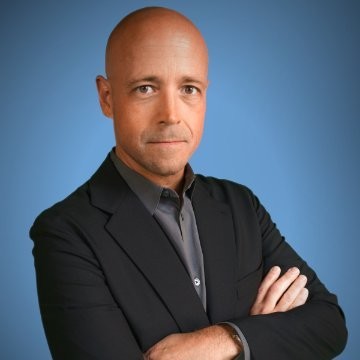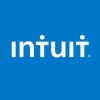From an initial dream of being a doctor to interning with NASA to eventually landing in the C-Suite at Intuit, Atticus Tysen (LinkedIn) has traveled a long and winding road. As the CIO of Intuit, which makes products such as QuickBooks and TurboTax, and brings in more than $5 billion per year in revenue, Atticus has a lot of responsibilities on his plate. IT, he says, is the Achilles heel of an organization and being in charge of IT for a company as large as Intuit means there are many challenges but just as many exciting innovations and success stories.
On this episode of IT Visionaries, Atticus discusses all of that and more, and he digs deep into how the processes and products Intuit creates ultimately always comes down to what is best for the customer.
Best Advice: “Really be curious about the business your company is in and deeply understand that.”
Key Takeaways:
Atticus’s start in technology — (1:30)
After initially thinking he wanted to be a doctor, Atticus completely shifted gears in college and eventually moved toward tech. His first internship was with NASA doing bed rest studies and looking at the effects being in space would have on the body. While doing that he saw the technical work being done by the computer scientists and became interested in learning how to do them himself. He got a computer science degree and went to work for Apple soon after graduating and eventually landed at Intuit in the intellectual property department. After 11 years, he moved into the IT department.
“I really felt like IT was our Achilles heel. I would always hear from product teams, ‘Well, the reason we can’t do that is because of IT.’ And eventually, I thought, well, let’s go fix that. I loved the company and wanted to try to give back and try to help and I thought, ‘I’m an engineer. How hard can this be? We’ll just fix it.’ Turns out it is not a technology problem, it’s more a human problem and technology problem. And so now I’ve been doing the role for five and a half years and really love it.”
Growing into the role of CIO — (7:00)
Prior to getting into IT, Atticus admits that he really didn’t know how the company was run or how it worked. Once he entered the world of IT, he had a greater understanding of exactly how Intuit operated in every way. For the first year in the CIO role, Atticus says he mainly was putting out fires, learning operations and the technology involved, and, eventually, figuring out ways to provide advantages to the company through technology.
“That’s been a great benefit of being in the role is learning how the company really does operate and where the money flows and where the issues are. IT is good for that.”
“10 years ago, I think if you were the CIO, your job was to implement stuff. Now as the CIO, you’re job is not to do that. Your job is to help make sure your company is using technology the best it can. And it doesn’t mean you own everything and it doesn’t mean you operate everything, but it does mean you’re trying to make sure it’s secure and it scales. But technology comes from all over the place. And as the CIO, you’ve got to have a view of all of that and really make sure your company is doing the best it can. That’s a very different job than implementing.”
“I think the role evolves to be much more an enabler of multiple people using technologies across an enterprise. And they’re much more focused on life cycle management of technologies that are going to get shorter and shorter as opposed to implementing specific pieces of tech.”
Implementing new technology — (11:00)
At Intuit, Atticus says that there is a great deal of support for entrepreneurial ideas and implementing new technology. Rather than resisting change or disruption, Atticus says that he and the rest of his IT team look at the reasons behind the ask and try to figure out the best ways to make the ask into a reality.
“One of the things we talk about in IT is our job is really to say ‘how’ not ‘no.’ And so when somebody comes and they want to do something, the first step is to just understand what are they trying to do before saying no….People in IT almost always know a hundred reasons why something shouldn’t happen. They know all the risks, they know all the problems. And if they lead with that, that plays right into all the old tapes of the IT department is slow and they don’t move fast. And so you can’t fall into that trap. You got to just hold that back a little bit and first try to understand what is the business really trying to do. And then you can start to say, ‘Here’s a couple of ways you could do that.’”
Deciding on governance — (18:20)
Atticus says that governance ultimately comes down to what is best for the customer. And, at Intuit, the relationship with the customer has been important from the start. Intuit began a program called “Follow Me Home,” in which if a customer bought a product, someone from Intuit would follow them home or to their office to see exactly how the product was being used and what could be improved for that customer.
“It starts with ultimately what’s going to be best at the end of the day for the customer of the company. If providing a unified experience for the end customer is important and everybody agrees that it’s important, you’re going to have the right level of governance kind of fall out of that, where you’re going to have governance around maybe the way you touch the customer, tracking that and being able to have a consistent view….If as a company that doesn’t matter, like if you really are five separate products and you know there’s not a lot of overlap in your customers, then you don’t worry so much about that. And so I think it has to start with what’s the experience you want to provide your end customers and let that conversation naturally happen. And I think often the role of the CIO or the head technology person is to force that conversation a little bit because the individual product teams may not see it and may not understand it. And so, but you have to force it. It doesn’t mean you should decide which is the right technology, but you have to force them to have that conversation.”
“That concept of ‘Follow Me Home’ or ‘Follow Me to the Office’ really started with us 36 years ago in the founding of the company from Scott Cook, our founder. The belief is you can’t really understand a customer until you go observe them in their environment. So we do software for small businesses, but you don’t really understand what a small business owner is facing until you go see their environment and where they’re trying to do. Their accounting might be in the back of their coffee shop or it might be in the back of their mechanic shop or it might be at home. And understanding the context is super helpful. So that translates to IT as well.”
Some of the biggest challenges — (22:50)
As with so many other companies, Atticus says one of the biggest challenges he and Intuit face is trying to build new systems and create a perfectly functioning cloud while still maintaining a lot of the old systems and making sure they run flawlessly. And then you need to get everyone to adopt the new systems, which is always much harder than you expect. The movement from old systems to new ones is happening much quicker than before though. In fact, Atticus says that he’s replacing things he himself implemented just five years ago when he first became CIO when in the past systems would stand for decades.
“Sometimes it is the right thing to do a new feature to fix a bug in the product versus moving it from a legacy system. But those trade-offs are much more nuanced than I expected them to be.”
“[Replacing your own systems] also gives you some humility and respect for your predecessors. You know, it’s never a good idea to say whoever was in the seat before you messed things up. Cause they were making the best decision at the time too.”
Fostering innovation at Intuit — (26:30)
At Intuit, innovation is based around customer empathy and creating a broad range of solutions to problems. From that broad range, a narrowing down process happens in order to arrive at the best possible answer. Atticus describes it as a “hypothesis-driven testing culture and trying to get people to really try many things as opposed to thinking they have the right answer.”
In addition, Intuit just had their first round of “Engineering Days,” in which for five days, the engineers took a break from their normal projects, formed teams and just created an entry in the database that by the end of the week could be a product to ship. By refocusing their minds on other things, the engineers were more energized and self-empowered, attitudes that Atticus hopes they bring back to their everyday work.
The use of alignment triangles — (29:50)
The idea of an alignment triangle comes from General Stanley A. McChrystal who used the method to bring multiple branches of intelligence and the military together in a more information-sharing community. It also presents a clear sense of how each branch of the triangle is aligned with the overall mission. Intuit uses the same principle in every organization within their business. The core values and the True North Goals remain the same for each department within Intuit, but each triangle is different based on the projects and people that are involved.
“The whole idea behind the alignment triangle is how do you get a large dispersed organization kind of aligned around a common mission, uh, and how they’re delivering against that mission. And you know, Intuit as a company, we’ve grown up with lots of different great products, but now it’s important for us to deliver the right customer experience we want to do to be more aligned.”
Looking toward the future — (31:20)
One of the new technologies Atticus is excited about is A.I. And at Intuit, Atticus explains that they are trying to leverage A.I. to benefit their customers. The first foray with A.I. and machine learning was when they built algorithms to provide TurboTax users answers or suggestions to common problems they were posting about in the live community. Today, the engineers at Intuit are trying to use A.I. to help with form completion and finding ways to make life easier for customers so they don’t have to input unnecessary or redundant information.
“Ultimately we really want to make sure that you as a customer are not having to deal with the drudgery of entering numbers and crunching numbers. Rather you’re more getting to better insights and having better conversations with your accountant or your financial advisor. And so we’re really excited about how to apply A.I. and M.L. to some of the big data sets that we have.”




